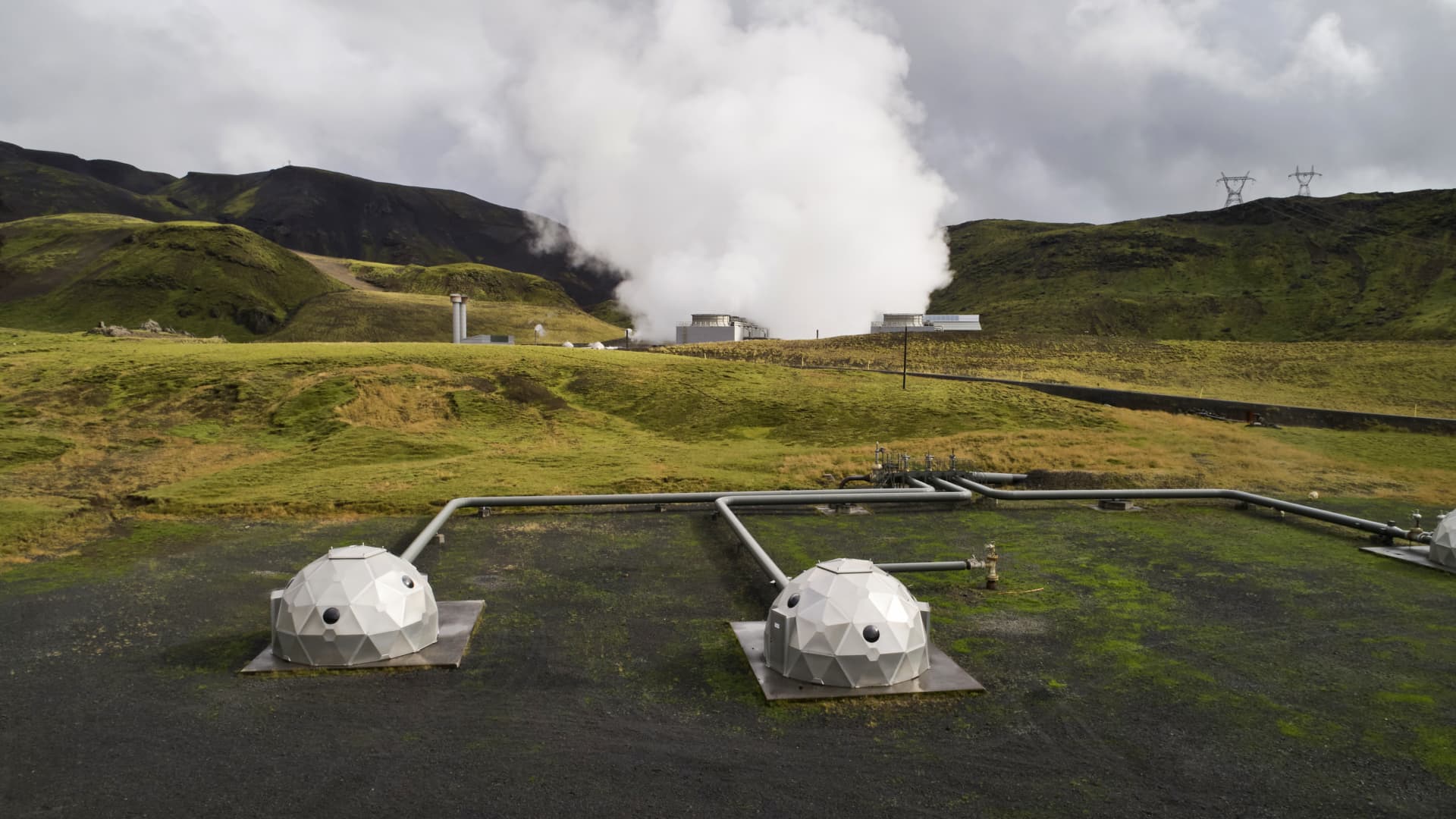Online payments technology provider Stripe is teaming up with several other companies, including Google parent Alphabet and Facebook parent Meta, to commit to spend nearly $1 billion spurring the carbon capture market.
On Tuesday the companies announced the creation of Frontier, which is committing to purchase $925 million worth of permanent carbon removal from companies that are developing the technology over the next nine years.
Frontier will be a wholly owned subsidiary of Stripe. Alphabet, Meta, e-commerce platform Shopify and consulting giant McKinsey are chipping into the pot and committing to purchase some of the carbon capture solutions. Stripe will also provide customers to Frontier through its Stripe Climate program, which allows online sellers using Stripe’s platform to commit a portion of sales to carbon removal.
The goal of the investment is to turbocharge the nascent industry.
The UN’s Intergovernmental Panel on Climate Change has estimated that to limit global warning to 1.5 degrees above pre-industrial levels, an average of 6 billion tons of carbon dioxide will have to be removed each year from the atmosphere by 2050. However less than 10,000 tons of carbon dioxide have been captured to date.
So momentum is starting to build in the space.
“Sentiment is changing about both carbon capture and carbon dioxide removal,” said Julio Friedmann, chief scientist at Carbon Direct, which invests in and advises companies on carbon removal solutions.
“This is changing in part because we are not succeeding on climate at the speed and scale required,” he added. “In short: we’re failing and we need a bigger boat — one that includes all serious options for mitigation.”
The IPCC’s Sixth Assessment report, released Apr. 4, specifically mentioned the importance of carbon capture, saying it is “necessary to achieve net zero CO2 and GHG emissions both globally and nationally, counterbalancing ‘hard-to-abate’ residual emissions,” the report said.
Beyond the Frontier announcement, companies and governments have been sinking billions the into technology.
For example, the Swiss carbon sequestration company Climeworks raised a $650 million equity round of funding on April 5. In the US, the Bipartisan Infrastructure Bill included $3.5 billion in direct investment by the U.S. government in carbon capture technologies, while both the UK and EU have committed to capture 5 million tons per year of carbon dioxide.
Funding to get the flywheel turning
The advanced market commitment funding model was used to develop pneumococcal vaccines for low-income countries in 2009. A group of funders collaborated with Gavi, UNICEF and the World Bank to commit $1.5 billion in purchases to spur the development of the vaccines. That AMC helped vaccinate millions of children.
This is the first time the model has been used to fund carbon removal technologies at scale.
Frontier’s role will be to collect collect financial commitments from companies and governments who want to purchase carbon capture solutions to make good on their net-zero pledges, vet the suppliers of those solutions, and then pay the suppliers once the solutions are delivered.
The group plans to announce more details about where it will spend the money later this year. Companies will be selected if their technologies can store carbon for more than 1,000 years, have a path to being affordable at scale — defined as less than $100 per ton by 2040 — and have a path to remove more than half a gigaton of carbon by 2040, among other factors.
The news was cheered by Facebook’s former chief technology officer, Mike Schroepfer, who has recently announced he will be spending his time fighting climate change.
“This is huge and I’m super proud Meta is a launch partner,” Schroepfer said on Twitter. ”Even the most conservative climate models say we need to take carbon dioxide out of the atmosphere to avert the worst of the climate crisis. Many cool technologies exist but they don’t have a market for their product.”
Not everyone, however, sees the focus on carbon removal technologies as a good thing.
“Honestly, I really wish these same companies were investing the same amount of money in clean energy solutions,” Michael E. Mann, a professor of atmospheric science at Penn State, told CNBC. “As I discuss in ‘The New Climate War’, there is no evidence that carbon removal can be implemented at the scale necessary to make a dent in global carbon emissions on the timeframe necessary,” said Mann, who is also the also director of the Penn State Earth System Science Center (ESSC).
Globally, carbon emissions need to be reduced by 50% this decade, Mann said.
Carbon capture “could play a role later down the road, but for the time being was is needed is a rapid and dramatic transition away from fossil fuel burning toward renewable energy,” Mann said.
“The current Russian invasion of Ukraine, enabled by reliance of Europe on their gas and oil, is a reminder of the continued dangers of our dependence on fossil fuels,” Mann told CNBC. “What we need it so solve this problem at its source, not apply band aids at the edges.”
